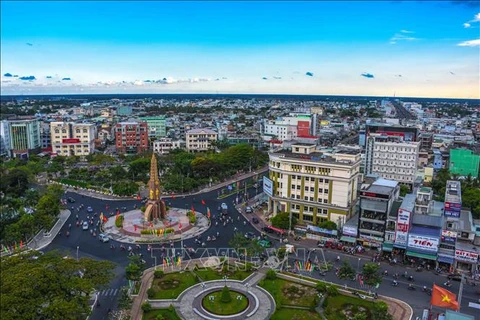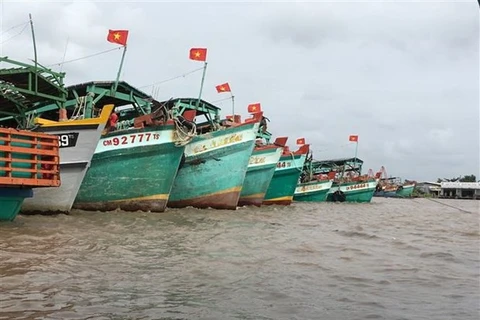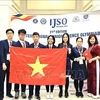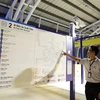Ca Mau (VNA) – The southernmost province of Ca Mau is working to fully tap its potential to successfully implement socio-economic development goals and promote rapid and sustainable development.
In the 25 years since its re-establishment (January 1, 1997 – 2022), Ca Mau has creatively and flexibly applied policies and resolutions of the Party and State in the local conditions. The province has mobilised and effectively used resources to promote its socio-economic development.
Thanks to efforts to restructure the economy, Ca Mau has become a key area for aquaculture, processing and export of aquatic products in the Mekong Delta and Vietnam in general.
In 2015 – 2020, the province's output of processed seafood for export reached 700,000 tonnes, Ca Mau earned nearly 5.6 billion USD from exporting aquatic products in the period.
Ca Mau continues to be one of the leading shrimp exporters in the country and its marine economy is thriving.
More investment has been poured into socio-economic infrastructure development, especially those for transport, irrigation, electricity, education, and healthcare, with a number of key projects completed and put into operation.
The locality has also recorded remarkable renovation in terms of socio-culture, education-training, and science-technology. The national defence, social order and safety have been maintained, while the social security work is guaranteed, helping improve local residents' material and spiritual lives and give a facelift to rural areas.
Currently, per capita yearly income in Ca Mau hits over 54 million VND (over 2,277 USD), 7 times higher than that of 25 years ago. The rate of poor households decreased to 1.5% from 30% in 1997. In 2021, Ca Mau’s economic growth expanded 0.92% and its export turnover reached 1.113 billion USD, up 63% compared to that of 1997.
In 2020, Ca Mau ranked 43rd in the Provincial Competitiveness Index (PCI) (up two places). Meanwhile it ranked 41st and 31st in the Public Administration Reform Index (PAR Index) and the Provincial Governance and Public Administration Performance Index (PAPI), up 8 and 9 places, respectively.
According to Director of the provincial Department of Planning and Investment Phan Hoang Vu, the locality is home to more than 430 investment projects with a total registered capital of over 5.6 billion USD.
During the last 25 years, Ca Mau has seen the development of a series of key strategic projects at national level such as the Ca Mau Gas-Power-Fertilizer Complex, Dam Cung and Nam Can bridges, Phung Hiep Road, the southern coastal corridor road, Ho Chi Minh Road, and wind power projects. Such projects have contributed to employment and economic growth in the locality.
Secretary of the provincial Party Committee and Chairman of the provincial People's Council Nguyen Tien Hai said Ca Mau boasts great potential for agriculture and aquaculture development, and the marine economy.
In the approved planning, the province has the Ca Mau Cape national tourism site, the Nam Can economic zone, and the Hon Khoai port.
In the coming time, Ca Mau province will continue to call for more foreign investment to tap its potential and strengths, along with promoting development of transport infrastructure, Hai said.
The provincial Party Organisation sets to promote rapid and sustainable development in the locality, with its gross domestic product expected to rise 6.5 - 7% per year in the period of 2020 - 2025; and per capita annual income reaching over 3,000 USD by 2025./.


























